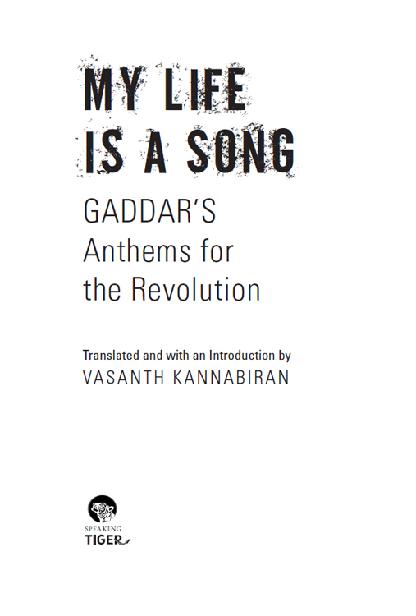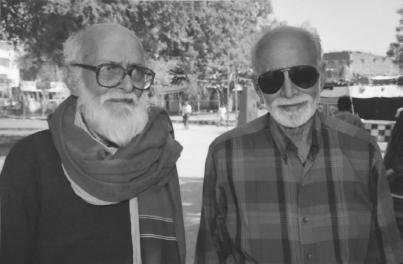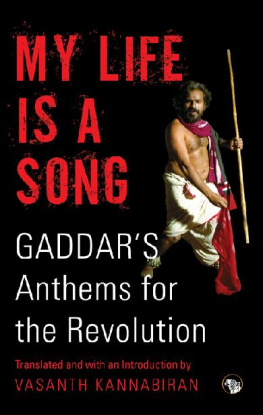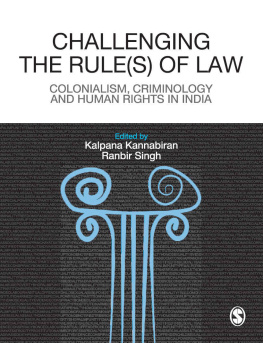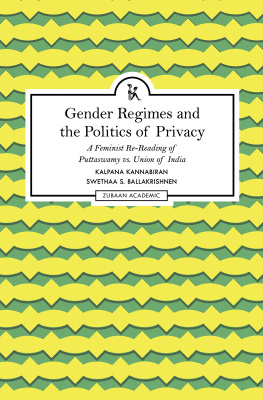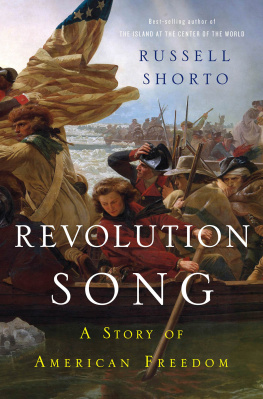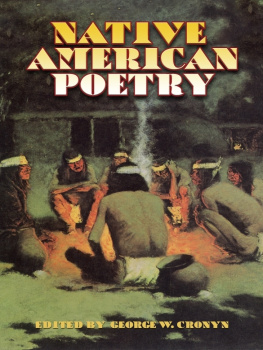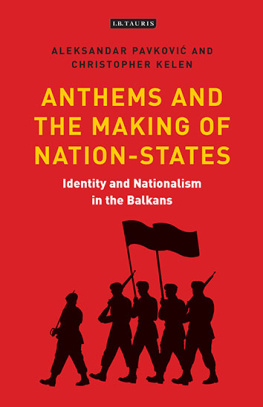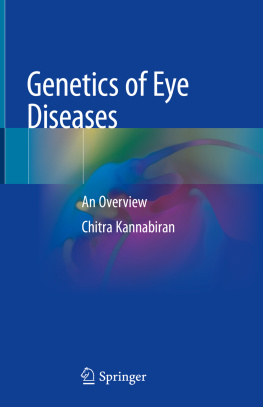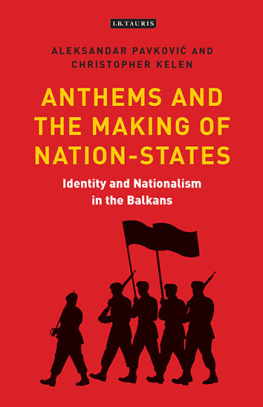INTRODUCTION
The Bard of the Revolution
It is difficult to describe Gummadi Vittal Rao, or Gaddar. You could call him a poet, for his words are poetic. You could call him a revolutionary, for his songs call for action. You could call him an activist, for his life is one of action. The word I think comes closest is the old-fashioned bard.
In that wordbardI hear the magic of poetry, I hear the retelling of history, I sense the connection with the people, the common people. If poetry in the last few centuries has retreated into air-conditioned rooms where those who have a literary pantheon inside their heads may congratulate themselves on being able to comprehend the references and the allusions, the bard still walks the road, still breathes the dust, still sweats as he sings.
Dr N. Gopi, the ex-Vice Chancellor of Potti Sriramulu Telugu University, eminent Telugu poet, literary critic and Sahitya Akademi awardee, describes Gaddar as a great singer-poet of Telugu and a living legend of revolutionary thought. He describes him as a modern Vaggeyakara or bard.
Gaddar is a bard but he is more than a bard. When he performsand it is a performance but not in the sense of an actwhen he has a meeting, thousands of people turn up. But this fact does not by itself capture the electric atmosphere that is generated. His audience hangs on to his words, yes. They sway to his music, yes. But far more than that, they respond from somewhere deep inside their hearts. He sings their lives. They are validated. They are honoured. They are scoured clean. They are urged to action.
Mahasweta Devi inscribed a book she gifted him with the words: To Gaddar, who is unforgivable and incorrigible, yet I love love [ sic ] him. Writing in the Deccan Herald in 1997, journalist R. Akhileshwari describes Gaddar as the poet-singer who mobilizes hundreds and thousands of people, holding them in thrall, inspiring them to take up arms. The noted intellectual Kancha Ilaiah Shepherd says that if Russia produced a Gorky, China a Lu Xun, India has produced a Gaddar.
As Venkat Rao points out in his incisive study: Gaddar writes his songs yet this writing is preceded by the obsessive meditation on the tune, the refrainthe refrain in conjunction with the work of the hand, works as a trace,
Does this sum up Gaddar? Its not that simple.
Gaddar is a life force.
The Blossoming of a Singer of the Revolution
The son of poor Dalit labourers Lacchumamma and Seshaiah, Gaddar was born in Tupran, a small village in Medak district in Telangana on 4 May 1947, according to available records. Migrating to Aurangabad, which was part of the Nizams dominions to work as a contractor, his father added Rao and Bai to all his childrens names as was customary in that region. Besides, he wanted his children to command respect. B.R. Ambedkar used to address the workers on the evenings that he was there and speak to them at length about the importance of education. Listening to Ambedkars speeches, Gaddars father was influenced by his ideas on education and emphasized the importance of education to his children. He used to say that education was the means by which they could overcome caste discrimination. After some contracts in the Nizams dominions, he returned to Medak with his wife and children. One sister settled down in Aurangabad. Back in Tupran, their native village, his mother returned to working in the fields as his fathers contracts dwindled.
Gummadi Vittal Rao was the fifth of five children. He later dropped the Rao from his name to assert his Dalit identity. Influenced by his fathers insistence on the importance of education, Gaddar was the first Dalit boy to pass his higher secondary school from his village. He finished his Pre-University Course (the equivalent of the twelfth year under the Ten-plus-Two-plus-Three system of education) and then joined the Osmania University Engineering College where he came under the influence of Keshav Rao Jadhav, the Lohiaite Socialist, who, while teaching English, used his contact with his students to explain ideas of socialism and to eliminate caste and communal discrimination among Telangana students. Realizing that as a poor boy he would not be able to complete the engineering course, Gaddar gave it up and sought other means of livelihood. He worked as a labourer in a chemical factory near Balanagar, on the outskirts of Hyderabad. This is where he tells us of his first public performances where he sang and kept up the spirits of his fellow workers. Even as a child when he accompanied his mother to the fields, the other women would tell him to sing. His gift of singing kept their spirits up and helped pass the day easily. Gaddars gift of singing the lives of the people, echoing their pains, was obviously evident from a young age.
He was inspired by revolutionary leaders like Vempatapu Satyam and began to read about the Srikakulam peasant movement. His attraction to Vempatapu Satyam and revolutionary movements served to deepen his desire to communicate and transform the consciousness of the people. The beginnings of the Telangana movement in 1969 created the hope that the movement would end unemployment and poverty in the region. Gaddar joined enthusiastically but soon grew disillusioned by the leadership and dissociated himself from them. He even began to expose them through his songs.
By the early 70s, revolution was in the air. The country was simmering with rebellion against repressive State laws and violence against the common people. Activists who joined the movements were captured and mercilessly killed in police encounters. Parties led by the ideologies of Marxism-Leninism and Maoism sought out active energetic youth and recruited them into the movement. It was against this backdrop that many groups of revolutionary writers, poets and activists sprang forth. Gaddar was attracted to the ideals of the movement like numerous other students and youth of his time. In this time of acute unrest, artists like Gaddar were critical to raising the consciousness of the common people and enlisting their support to shelter and feed the Naxalite cadre who were underground. This period of great revolutionary upheaval culminated in the Emergency declared by Indira Gandhi to contain and stamp out the effects of Naxalbari and Srikakulam. With his innate gift for singing and poetry and dance, his powerful capacity to sing the sorrows of the poor, and bring people into the movement, Gaddar was drawn into the Peoples War Groupone of the most militant revolutionary parties in the countryand became its cultural ambassador.
